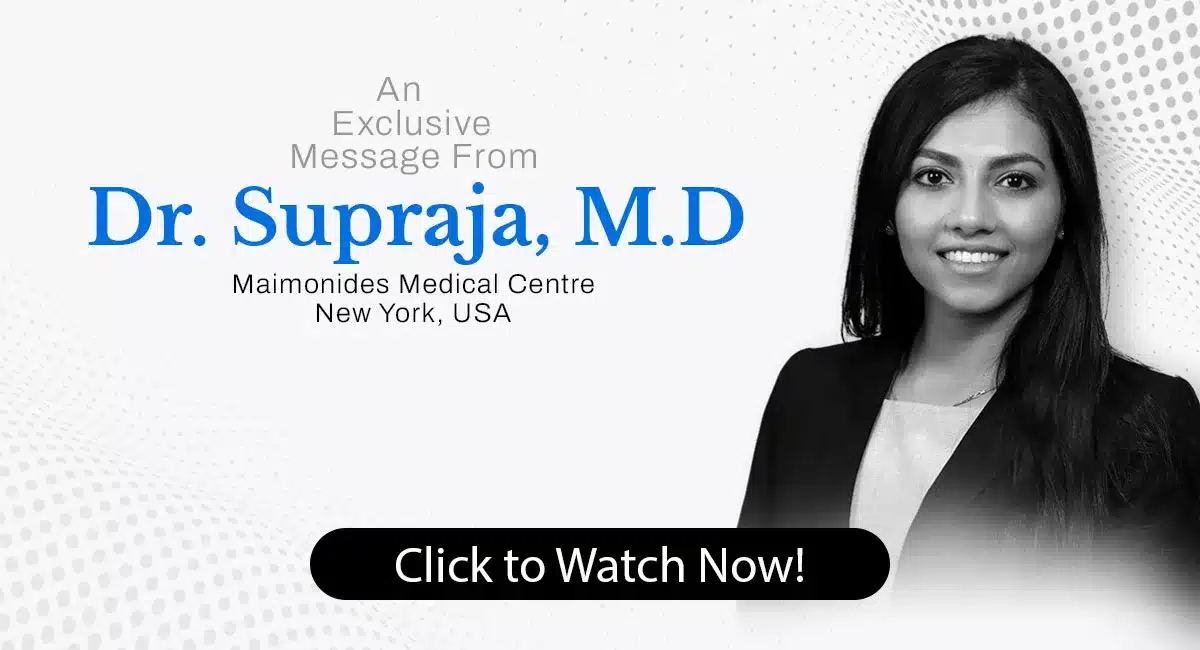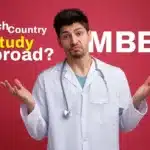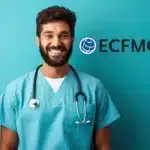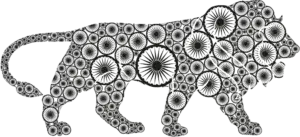Embarking on MBBS studies in the USA is a transformative journey for Indian students with aspirations to become globally recognized doctors. This comprehensive guide offers insights into the MBBS to MD pathway, strategic planning, the admissions process, career prospects, and financial considerations. With meticulous preparation and a clear understanding of the challenges and opportunities, students can navigate the complexities of the US medical education system to achieve their dreams.
Key Takeaways
- Indian students must complete a pre-medical bachelor’s degree and pass exams like the MCAT and USMLE to transition from MBBS to MD in the USA.
- Strategic planning involves selecting the right medical school, understanding the costs, and securing funding through scholarships and financial aid.
- Gaining US clinical experience and securing Letters of Recommendation (LORs) are crucial for a competitive residency application.
- The MD degree from the USA offers global recognition and a wide range of career opportunities, including the possibility to practice medicine in India.
- Navigating the admissions process requires understanding the eligibility criteria, completing prerequisite courses, and building a well-rounded profile.
Understanding the MBBS to MD Pathway in the USA

Comparing MBBS and MD Programs
The journey to becoming a doctor in the United States typically involves obtaining a Doctor of Medicine (MD) degree. This pathway is distinct from the Bachelor of Medicine, Bachelor of Surgery (MBBS) degree common in countries like India. Understanding the differences between these educational paths is essential for international students, especially those from India, who are considering a medical career in the USA.
The MD degree in the USA is a postgraduate qualification that requires prior completion of an undergraduate degree, often in a pre-medical field. In contrast, the MBBS is an undergraduate program that combines pre-medical and medical education. Here’s a brief comparison:
- Duration: MBBS programs usually span 5.5 to 6 years, while MD programs in the USA take 4 years after a 3 to 4-year undergraduate degree.
- Entrance Exams: MBBS admissions may require exams like NEET, whereas MD programs in the USA typically require the MCAT.
- Curriculum: The MD curriculum places a strong emphasis on research and clinical rotations within the US healthcare system, as well as preparation for the USMLE.
- Global Recognition: An MD from the USA is widely recognized, offering a broader range of global career opportunities.
The choice between pursuing an MBBS or an MD is a significant one, with implications for the duration of study, entrance requirements, and international career prospects.
Eligibility and Admission Criteria for Indian Students
For Indian students, the journey to an MD in the USA begins with understanding the eligibility and admission criteria. A bachelor’s degree is a prerequisite, with a strong emphasis on pre-medical coursework. Proficiency in English, often validated by TOEFL or IELTS, is also essential.
The admission process is highly competitive, focusing on academic excellence and a well-rounded profile. Here are the key eligibility criteria:
- Completion of 12th grade with a focus on science subjects
- Proficiency in English (TOEFL/IELTS scores may be required)
- Minimum GPA and pre-medical coursework (varies by program)
The transition from MBBS to MD involves not only academic preparation but also adapting to a new educational and cultural environment. Proactive research and networking with professionals who have successfully made this transition can provide invaluable insights.
It is crucial to begin early preparation and familiarize oneself with the specific requirements of the chosen universities. Strategic planning and early application are essential to enhance the prospects of acceptance into a US MD program.
Strategic Planning for MBBS Studies in the USA
Strategic planning is the cornerstone of successfully navigating the MBBS to MD pathway in the USA. Early and informed decision-making can set the foundation for a smooth transition into the American medical education system. Here are some key considerations for Indian students:
- Eligibility Criteria: Verify that you meet the academic and language proficiency requirements.
- Pre-medical Coursework: Complete the necessary pre-medical courses, often including biology, chemistry, and physics.
- Standardized Tests: Prepare for and take exams such as the MCAT, which are integral to the application process.
- Clinical Experience: Gain clinical exposure, which can be advantageous during the application process.
- Financial Planning: Understand the costs involved and explore scholarship and funding options.
Strategic planning extends beyond academics; it encompasses understanding the cultural nuances and building a professional network within the US healthcare system.
It is also crucial to be aware of the USMLE Steps 1 and 2, as passing these exams is a prerequisite for medical licensure in the USA. Securing strong Letters of Recommendation and building a well-rounded profile are essential to enhance your residency match chances. Drawing inspiration from the Yale School of Medicine Strategic Plan for Medical Education, which outlines goals and action items across various domains, can provide a blueprint for your own strategic planning.
Navigating the Admissions Process

Key Steps for Indian Students
For Indian students aiming to pursue an MBBS in the USA, the journey begins with a thorough understanding of the eligibility criteria and the academic prerequisites. A bachelor’s degree with majors in science is often a non-negotiable requirement, along with proficiency in English demonstrated through tests like TOEFL or IELTS.
The steps to consider include:
- Ensuring you meet the academic and language proficiency requirements.
- Completing necessary pre-medical coursework in subjects such as biology, chemistry, and physics.
- Preparing for and taking the MCAT, a critical component of the application process.
- Gaining clinical exposure, which can significantly enhance your application.
- Understanding the financial implications and exploring scholarship and funding options.
The transition from MBBS to MD is not just about academic preparation but also about adapting to a new educational and cultural environment. Networking with professionals who have successfully made this transition can provide invaluable insights.
It’s also crucial to be aware of the USMLE Steps 1 and 2, as passing these exams is a prerequisite for medical licensure in the USA. Building a well-rounded profile, including securing strong Letters of Recommendation, is essential for a successful residency match.
Completing Prerequisite Course Requirements
Before embarking on the journey to an MD in the USA, Indian students must navigate the prerequisite course requirements. Completing these courses is essential for eligibility to apply to medical schools. Typically, a bachelor’s degree in a relevant field is required, with a focus on science subjects such as biology, chemistry, and physics. The exact prerequisites can vary between institutions but often include a combination of coursework and standardized tests.
Essential considerations for prospective students include:
- A strong foundation in science subjects
- Proficiency in English, often validated by TOEFL or IELTS
- A minimum GPA, as specified by the program
- Completion of pre-medical coursework
The transition from MBBS to MD involves not only academic preparation but also adapting to a new educational and cultural environment.
It’s important to check the specific requirements of each medical school within the Association of American Medical Colleges (AAMC) and to plan accordingly. Strategic planning and early preparation are key to ensuring that all prerequisites are met before submitting your primary application.
Finding Research Opportunities for CV in MBBS
Securing research opportunities is a pivotal step for Indian students aiming to enhance their medical school applications and CVs. Engaging in research demonstrates a commitment to the field of medicine and can provide a competitive edge during the residency match process. To find these opportunities, students can explore various resources such as the AAMC’s database of fellowships, internships, and summer programs.
- Start by identifying your areas of interest in medicine and look for research projects that align with them.
- Reach out to medical faculty or professionals who are conducting research in your field of interest.
- Utilize online platforms and forums that list research opportunities for medical students.
- Consider volunteering for research projects, which can sometimes lead to more formal research positions.
Proactive networking and a strategic approach to seeking out research roles are essential. It’s not only about gaining experience but also about making meaningful contributions to the field.
Remember, the quality of your research experience is as important as the quantity. Aim to be involved in research that results in publications or presentations, as these are highly valued by residency programs. By taking a methodical approach to finding research opportunities, you can significantly bolster your medical CV and pave the way for a successful career in medicine.
Financial Planning and Scholarships

Understanding the Costs of Medical Education
Embarking on a medical degree in the USA involves substantial financial commitment. Costs can quickly add up, from tuition fees to living expenses and additional charges such as health insurance and educational materials. It’s imperative for students, especially those from abroad, to have a clear financial plan in place.
- Tuition Fees
- Living Expenses
- Health Insurance
- Educational Materials
- Miscellaneous Fees
For instance, the AMCAS application fee is $175, which includes one medical school designation, with each additional choice costing $45. While these figures may seem daunting, scholarships and financial aid can play a pivotal role in managing these expenses. Academic scholarships, based on merit, and government-funded scholarships are available to those who qualify and accept an institution’s offer.
Financial planning for medical education in the USA is crucial for international students. Costs include tuition, living expenses, and additional fees. Scholarships and funding options can help offset expenses.
Understanding the financial landscape of medical education is the first step towards a successful academic journey in the field of medicine.
Exploring Scholarship and Funding Options
Embarking on MBBS studies in the USA is a significant financial undertaking. Scholarships and funding options are vital resources that can alleviate the burden of medical school expenses. It’s important to research and apply for these opportunities well in advance to maximize your chances of receiving aid.
Financial planning is crucial for MBBS in the US. Scholarships and grants can help cover costs. Explore all financial aid options early.
Here are some steps to consider when seeking scholarships:
- Identify scholarships for which you are eligible, including those specifically for international or Indian students.
- Prepare a compelling application, highlighting academic achievements and potential contributions to the medical field.
- Meet all deadlines and provide all required documentation to ensure your application is considered.
By taking a proactive approach to financial planning and exploring all available scholarships and grants, students can significantly reduce the financial challenges associated with pursuing an MBBS in the USA.
Budgeting for Living Expenses and Additional Costs
When embarking on MBBS studies in the USA, it’s imperative to create a detailed budget that accounts for both tuition and living expenses. Tuition fees can vary widely, with some institutions offering inclusive packages that cover accommodation, while others may not. Living expenses, including accommodation, food, transportation, and personal costs, can add up quickly and must be factored into your financial planning.
Living expenses in different locations can vary significantly. For example, urban areas may have higher costs of living compared to rural settings. Here’s a simplified breakdown of average annual costs you might expect:
| Expense Category | Estimated Annual Cost (USD) |
|---|---|
| Tuition & Fees | 20,000 – 50,000 |
| Accommodation | 6,000 – 12,000 |
| Food | 3,000 – 5,000 |
| Transportation | 1,000 – 2,000 |
| Personal Expenses | 2,000 – 4,000 |
It’s essential to include all potential expenses in your budget to avoid financial strain during your studies. This includes tuition, accommodation, food, transportation, and other personal expenses.
While scholarships and financial aid can significantly reduce the burden, they are highly competitive. Exploring all financial aid options early in the application process is advisable. Additionally, some medical schools offer work-study programs to help students finance their education while gaining valuable experience.
Gaining Clinical Experience in the USA

The Importance of US Clinical Rotations
Clinical rotations in the USA are a cornerstone of medical education for MBBS students, providing an invaluable opportunity to apply theoretical knowledge in a practical setting. Clinical rotations play a vital role in graduate medical education, particularly in meeting residency requirements. Exposure to the diverse patient population and the chance to work with leading experts using cutting-edge medical technologies are just a few of the benefits that these rotations offer.
Clinical rotations often serve as an extended interview for residency programs, allowing program directors and faculty to evaluate a student’s clinical abilities, work ethic, and fit within their program before making residency offers.
Additionally, clinical rotations are an excellent platform for networking with physicians, residents, and other medical students. These connections can be invaluable for securing residency interviews and future collaborations in your medical career. The experience gained during these rotations can significantly boost your application’s competitiveness for residency positions, as residency programs favor applicants with U.S. clinical exposure.
- Exposure to the U.S. Medical Culture
- Gaining a Competitive Edge in Interviews
- Acquiring U.S. Letters of Recommendation (LORs)
- Networking Opportunities
- Evaluation for Residency Programs
Understanding the healthcare system and engaging with the medical culture are essential for smoothly transitioning into a residency program. The knowledge and skills acquired during clinical rotations in the U.S. are not only beneficial for residency applications but also for your future practice as a physician in the U.S.
Securing Letters of Recommendation (LORs)
Securing strong Letters of Recommendation (LORs) is a pivotal step in the application process for Indian students aiming to pursue an MD in the USA. LORs from US-based clinicians or academics can significantly enhance your residency application, reflecting your clinical competence and interpersonal skills within the U.S. healthcare context. Here are some tips to help you obtain impactful LORs:
- Establish meaningful relationships with mentors during clinical rotations or research projects.
- Demonstrate professionalism, initiative, and a strong work ethic to leave a lasting impression.
- Request LORs well in advance of application deadlines to ensure timely submission.
- Provide your recommenders with your CV and personal statement to help them write a personalized letter.
It’s essential to choose recommenders who are familiar with your work and can vouch for your abilities and character.
In addition to the above points, engaging in clinical rotations in the U.S. acquaints you with the country’s medical culture, which is an integral part of your training. These rotations often serve as an extended interview, allowing program directors and faculty to evaluate your fit within their program before making residency offers. Remember to follow up with a polite thank-you note or email after receiving a LOR, as this can reinforce a positive impression.
Networking and Building a Professional Profile
In the journey to becoming a medical professional in the USA, networking and building a professional profile are indispensable. Engaging with peers, mentors, and industry professionals can open doors to clinical placement opportunities and provide insights into the medical field. Indian students should leverage social media platforms like LinkedIn and participate in medical conferences to expand their network.
Forging strong connections with alumni and faculty can lead to mentorship and guidance, which are crucial for navigating post-MBBS career paths.
Here are some steps to enhance your professional network:
- Attend medical seminars and workshops to meet like-minded individuals.
- Join professional medical associations to access resources and networking events.
- Volunteer or take part in research projects to connect with professionals in your field of interest.
- Seek out clinical rotations that offer exposure to a diverse medical community.
Remember, a robust professional network can significantly influence your residency application and future career prospects in the USA.
Career Prospects and Global Opportunities

Residency and Specialization Pathways
After the rigorous journey of medical school, the next critical step for aspiring doctors is securing a residency position. The match rate for residency positions is a crucial indicator of success for medical graduates. For Indian students, understanding the nuances of the residency application process in the USA is essential. Specialization in medicine allows physicians to focus on a particular field of interest, enhancing their expertise and career prospects.
Key Steps for a Successful Residency Match:
- Clearing USMLE Steps 1 and 2
- Gaining clinical experience in the USA
- Securing strong Letters of Recommendation (LORs)
- Building a comprehensive CV
The pathway to residency and specialization is competitive and demanding, but with strategic planning and a strong application, students can achieve their desired placements.
Specialization often begins with the choice of residency program, which should align with the student’s long-term career goals. Residency programs favor applicants with U.S. clinical exposure, as it demonstrates familiarity with the U.S. healthcare system. The process of specialization continues with fellowship training, where doctors can further refine their skills in a subspecialty.
Licensure and Practice in the USA and Abroad
After obtaining an MD degree, the next critical step for medical graduates is to secure licensure for practice. In the USA, this involves passing the United States Medical Licensing Examination (USMLE), which is a three-step examination. Interestingly, the USMLE is also recognized in several other countries, which can facilitate international practice for US-trained doctors.
The USMLE Steps 1 and 2 CK (Clinical Knowledge) are often completed during medical school, while Step 3 is typically taken after graduation, during or after the first year of residency. It’s important to note that each state in the USA has its own medical board with specific licensing requirements, so graduates must ensure they meet the criteria for the state in which they wish to practice.
For those looking to practice medicine abroad, the recognition of a US MD degree varies by country. Some countries may require additional examinations or certifications. Here is a list of countries where the USMLE is accepted as an equivalent to the national medical exam:
- United Arab Emirates (UAE)
- Israel
- Ireland
- Others may have reciprocal agreements
It is essential for graduates to research the specific licensing requirements of the country where they intend to practice, as well as to stay informed about any changes in international medical regulations.
In addition to licensure, building a professional profile that includes research, publications, and clinical experience is vital for career advancement. Networking with healthcare professionals and joining relevant medical associations can also provide support and open doors to global opportunities.
Returning to India: Transitioning Your US MD
After completing an MD in the USA, Indian students may consider returning to their home country to practice medicine. The transition involves not only a change in location but also adapting to the medical system in India. One of the key steps in this process is passing the Foreign Medical Graduate Examination (FMGE), which assesses an individual’s readiness to practice medicine in India.
- Clear the FMGE: A mandatory step to practice in India.
- Credential Verification: Ensure all your US qualifications are recognized.
- Understand the Healthcare System: Familiarize yourself with the local medical practices and regulations.
- Networking: Connect with Indian medical professionals and institutions.
The journey back to India with a US MD degree can be a rewarding one, offering the opportunity to apply global medical knowledge to local healthcare challenges.
It is also important to note that the Medical Council of India regulates the process for foreign medical graduates to practice in India. This ensures that the standards of medical practice are maintained and that patients receive quality care.
Embark on a journey to a successful medical career with Divine Education Abroad Consultancy. Our Fast-Track MD Pathway offers a unique opportunity to become a US-qualified doctor without the MCAT or NEET exams. With a 97x higher success rate and 100% admission guarantee, we provide an affordable and efficient route to your dream. Don’t let common aspirant mistakes hold you back. Explore international opportunities, secure scholarships, and benefit from our comprehensive mentorship program. Ready to transform your future? Visit our website now to learn more and take the first step towards a rewarding medical career in the US/UK.
Conclusion
In conclusion, navigating the MBBS requirements in the USA is a multifaceted process that demands a deep understanding of the educational pathway, strategic planning, and a proactive approach. Indian students aspiring to transition from MBBS to MD must prepare for rigorous admissions, meet eligibility criteria, and plan financially for the high costs involved. The journey is challenging, with hurdles such as entrance exams, visa policies, and cultural adjustments. However, with the right guidance, clinical experience, and networking, students can successfully secure a residency and achieve their dream of practicing medicine globally. This comprehensive guide aims to equip aspiring doctors with the knowledge and strategies needed to embark on this ambitious path, ultimately leading to a rewarding career in the medical field.
Frequently Asked Questions
What is the difference between MBBS and MD programs in the USA?
In the USA, the MD (Doctor of Medicine) is a postgraduate degree that requires prior completion of an undergraduate pre-medical course, whereas the MBBS (Bachelor of Medicine, Bachelor of Surgery) is an undergraduate degree that combines pre-medical and medical education. MD programs focus on research and clinical rotations within the US healthcare system.
What are the eligibility criteria for Indian students to pursue MD in the USA?
Indian students must have a strong foundation in science subjects, proficiency in English (demonstrated by TOEFL/IELTS scores), and a minimum GPA. They also need to complete the necessary pre-medical coursework and standardized tests like the MCAT.
How can Indian students gain clinical experience in the USA?
Indian students can gain clinical experience in the USA through research, volunteering, and participating in clinical rotations. Securing US-based Letters of Recommendation (LORs) and networking with professionals are also crucial steps.
What financial considerations should Indian students be aware of when planning to study MD in the USA?
Students should understand that the cost of medical education in the USA can exceed $200,000, making financial planning critical. They should explore scholarships, funding options, and budget for living expenses and additional costs.
What are the career prospects for Indian students who complete an MD in the USA?
Career prospects are promising, with opportunities for residency, specialization, and global medical practice. A US MD degree is widely recognized and can lead to a broader range of career opportunities internationally.
What is the process for Indian MBBS graduates to transition to an MD program in the USA?
Indian MBBS graduates can transition to a US MD program by passing the USMLE Steps 1 and 2, securing a residency match in the US, gaining clinical experience, and building a professional network. Strategic planning and understanding of the US medical education system are essential for a successful transition.














